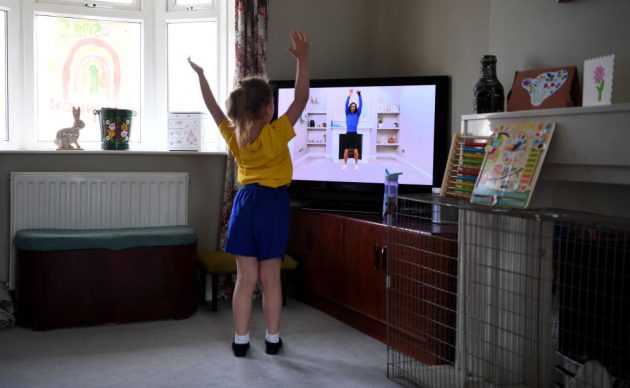Yoga, colouring books and maths lessons: How to survive home-schooling (again)

Homeschooling is back – with all the stresses that can sometimes entail. City A.M. asked the experts at Quizlet for their guide to delivering the best learning experience for children – whilst keeping parents and teachers sane.
These are anxious times, but they are also hopeful times: countries are sharing knowledge and know-how; politicians are devising unprecedented packages and measures to allow us to thrive again.
With schools set to close again, parents, siblings, and grandparents will be forced, almost overnight, to become teachers. It is with this in mind that we at Quizlet decided to reach out to our network of educators and edtech experts to put together these recommendations together.
Read more: England heads for lockdown again, but what are you allowed to do?
Before you consider these recommendations, remember that a student’s attention span is 2-3 minutes per year of their age, so keep that in mind when planning: for example, a teenager should be able to manage 30-40 consecutive minutes. Let the following steps be seen as a rough guide to keeping kids invested in their education and maintaining a routine while the country is on lockdown.
Create a structure
Many teachers will be creating daily and weekly lesson plans for students, or giving guided classes to follow from home. If this is the case for your child, it is important for you, as a parent, to try to be aligned with these schedules. If their class used to do maths in the morning and visit languages after lunch, continue that pattern to the best of your ability. Try to maintain regular school hours from home, so that your child doesn’t fall out of their existing routine. Then use this as a basis to build wider activities around: schedule exercise, relaxation time, and moments to be creative together.
Schedule creative time
It’s important to find time to be creative outside of schoolwork and computer time. Get books out, coloured pens, counters, blocks, whatever you may have to hand. Make a recipe with your family, work on a puzzle, go on an indoor scavenger hunt. Now’s the time to try something new.
Remember, connection is still key
Changing the home environment into a learning one can be difficult to associate, so it is important to find separate time to connect with each other. We may be physically distant, but we can still be socially close. Setting up virtual play dates on a one to one basis can also be a way of loosening up the scenario and feeling less alone. Parents can use secure systems, like Kast, to create virtual playgrounds, where children can come together to chat or play. This can also be a great way for parents to compare notes and offer support to one another.

Get active
At 9 am each day, body coach, Joe Wicks, is hosting a daily online PE Lesson that parents are encouraged to do together with their children, either in real-time or later in the day. If outdoor space is limited, be creative: push back the sofas to create a makeshift workout space. Additionally, meditation, yoga, and tai-chi are just a few activities that can be carried out as a whole family and don’t require a huge amount of space.
Embrace digital tools
Most parents will be at a total loss as to what is available to them and their children when it comes to the apps, platforms, and websites used every day in school. Bodies such as UNESCO have outlined some of the best and most effective sites, apps, and platforms to help students, parents, and teachers stay connected whilst learning from a distance. Connected platforms such as Google Classroom and study activity applications like Quizlet are also great as they allow teachers to monitor and keep up with students’ progress while they continue to learn at home.
In these strange times, it is important to remember that you are not alone. Though it may seem daunting and stressful, there are numerous resources available to help when teaching children from home. Whether it is a lesson plan that the teacher has emailed over, an online class to participate in together, or tailored videos, games, or quizzes, the tools are there for the taking.